Best MongoDB Guides to Buy in December 2025
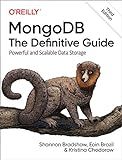
MongoDB: The Definitive Guide: Powerful and Scalable Data Storage


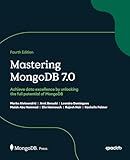
Mastering MongoDB 7.0: Achieve data excellence by unlocking the full potential of MongoDB



Practical MongoDB Aggregations: The official guide to developing optimal aggregation pipelines with MongoDB 7.0


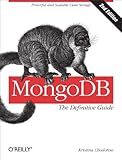
MongoDB: The Definitive Guide: Powerful and Scalable Data Storage


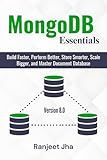
MongoDB Essentials: Build Faster, Perform Better, Store Smarter, Scale Bigger, and Master Document Database


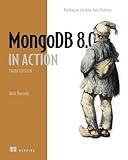
MongoDB in Action, Third Edition: Building on the Atlas Data Platform


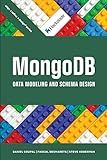
MongoDB Data Modeling and Schema Design


To apply $lookup with conditions in MongoDB, you can use the aggregate pipeline stages to match documents in the foreign collection based on certain conditions. You can use the $lookup stage to perform a left outer join between two collections and then apply additional conditions using the $match stage to filter the results. For example, you can specify a matching condition in the $match stage to only include documents from the foreign collection that meet certain criteria. This allows you to perform more complex queries and join operations between collections in MongoDB.
How to use $lookup with multiple conditions in MongoDB?
To use $lookup with multiple conditions in MongoDB, you can use the following syntax:
db.collection.aggregate([ { $lookup: { from: 'otherCollection', let: { condition1: '$field1', condition2: '$field2' }, pipeline: [ { $match: { $expr: { $and: [ { $eq: ['$field1', '$$condition1'] }, { $eq: ['$field2', '$$condition2'] } ] } } } ], as: 'outputFieldName' } } ])
In this example, replace collection with the name of your primary collection and otherCollection with the name of the collection you wish to perform the $lookup on. Replace field1 and field2 with the fields you want to match on in both collections. Replace outputFieldName with the desired name for the output field.
The $lookup stage includes a let option that defines variables for the pipeline, which can be referenced with $$ within the pipeline stages. In the pipeline, the $match stage uses $expr to evaluate an expression that checks for multiple conditions using $and.
This will perform a $lookup operation with multiple conditions in MongoDB.
How to retrieve related documents from another collection using $lookup?
To retrieve related documents from another collection using $lookup in MongoDB, you can follow these steps:
- Use the $lookup stage in an aggregation pipeline to perform a left outer join between two collections.
- Specify the from parameter in the $lookup stage to specify the name of the collection you want to perform the join with.
- Specify the localField parameter in the $lookup stage to specify the field from the input documents that will be used for matching with the foreign collection.
- Specify the foreignField parameter in the $lookup stage to specify the field from the foreign collection that will be used for matching with the input documents.
- Optionally, you can use the as parameter in the $lookup stage to specify the name of the new field where the joined documents will be stored.
Here is an example of how to retrieve related documents from another collection using $lookup:
db.collection.aggregate([ { $lookup: { from: "anotherCollection", localField: "fieldInFirstCollection", foreignField: "fieldInSecondCollection", as: "relatedDocuments" } } ])
In this example, the $lookup stage is used to join documents from the current collection with documents from the "anotherCollection" collection based on the values of "fieldInFirstCollection" in the current collection and "fieldInSecondCollection" in the "anotherCollection" collection. The joined documents will be stored in a new field called "relatedDocuments".
By using $lookup in MongoDB, you can easily retrieve related documents from another collection and incorporate them into your queries and aggregations.
How to perform a nested $lookup in MongoDB?
To perform a nested $lookup in MongoDB, you can use the following syntax:
db.collection1.aggregate([ { $lookup: { from: "collection2", localField: "field1", foreignField: "field2", as: "output1" } }, { $unwind: "$output1" }, { $lookup: { from: "collection3", localField: "output1.field3", foreignField: "field4", as: "output2" } }, { $unwind: "$output2" }, // Other stages or operations as needed ]);
In this example, we are performing a nested $lookup where we first match documents from two collections based on a common field (field1 and field2). Then we unwind the resulting array to flatten the output. Next, we perform another $lookup on the intermediate result to match documents from a third collection based on another common field (field3 and field4). Finally, we unwind the output of the second $lookup to get the final result.
You can continue chaining multiple $lookup stages as needed to perform deeper nested lookups in MongoDB.
